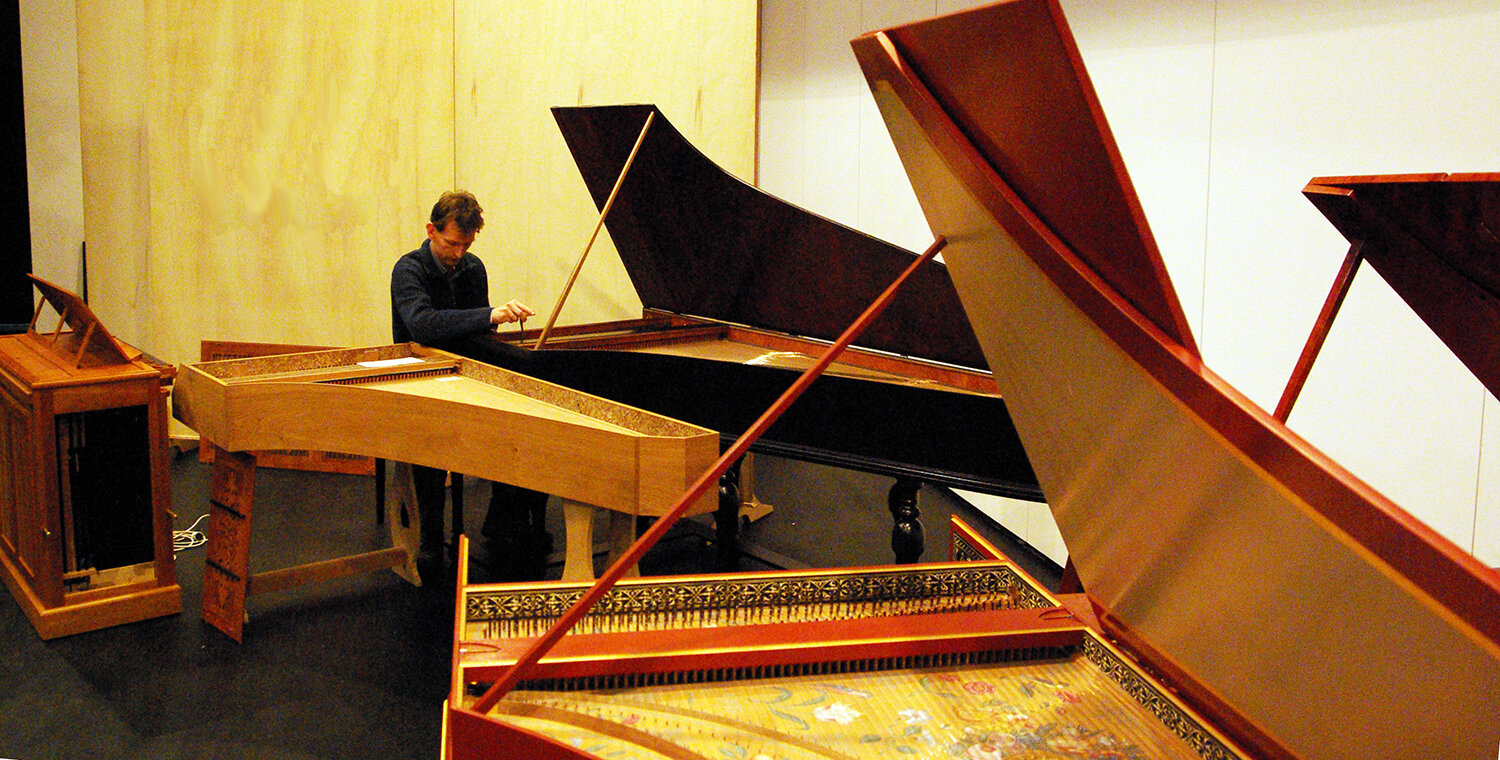
Historical Keyboard Instruments,
String and Wind Instruments,
Lute Instruments and Voice
Numerous historical instruments can be studied at the Trossingen University of Music: voice, historical keyboard instruments (harpsichord, historical organ, fortepiano, clavichord), basso continuo, chamber music, violin/viola, violoncello, viola da gamba, lute/theorbo/guitar, oboe, bassoon/dulcian, cornett, recorder, transverse flute, trumpet, clarinet, horn. The university has an extensive collection of instruments for this purpose.

Historische Instrumente
An der Hochschule für Musik Trossingen können unzählig viele historische Instrumente im Hauptfach studiert werden: Gesang, historische Tasteninstrumente (Cembalo, historische Orgel, Fortepiano, Clavichord), Violine/Viola, Violoncello, Viola da Gamba, Laute/Theorbe/Gitarre, Oboe, Fagott/Dulcian, Zink, Blockflöte, Traversflöte, Trompete, Klarinette, Horn. Die Hochschule verfügt dafür über eine umfangreiche Instrumentensammlung.